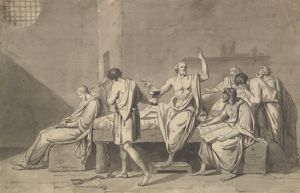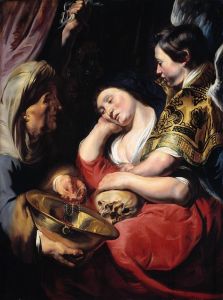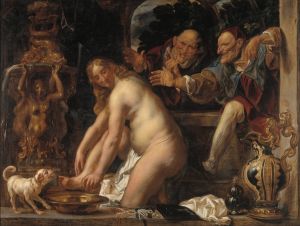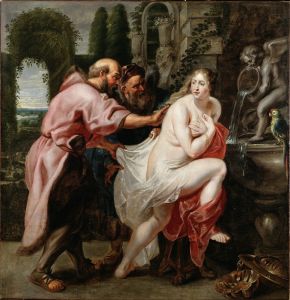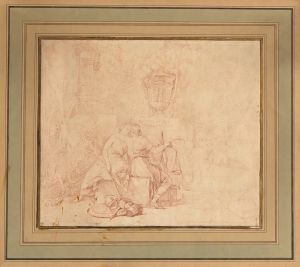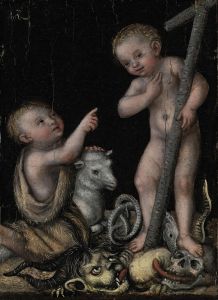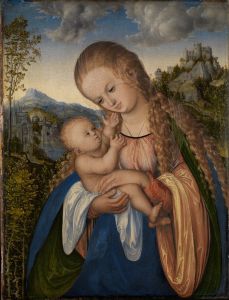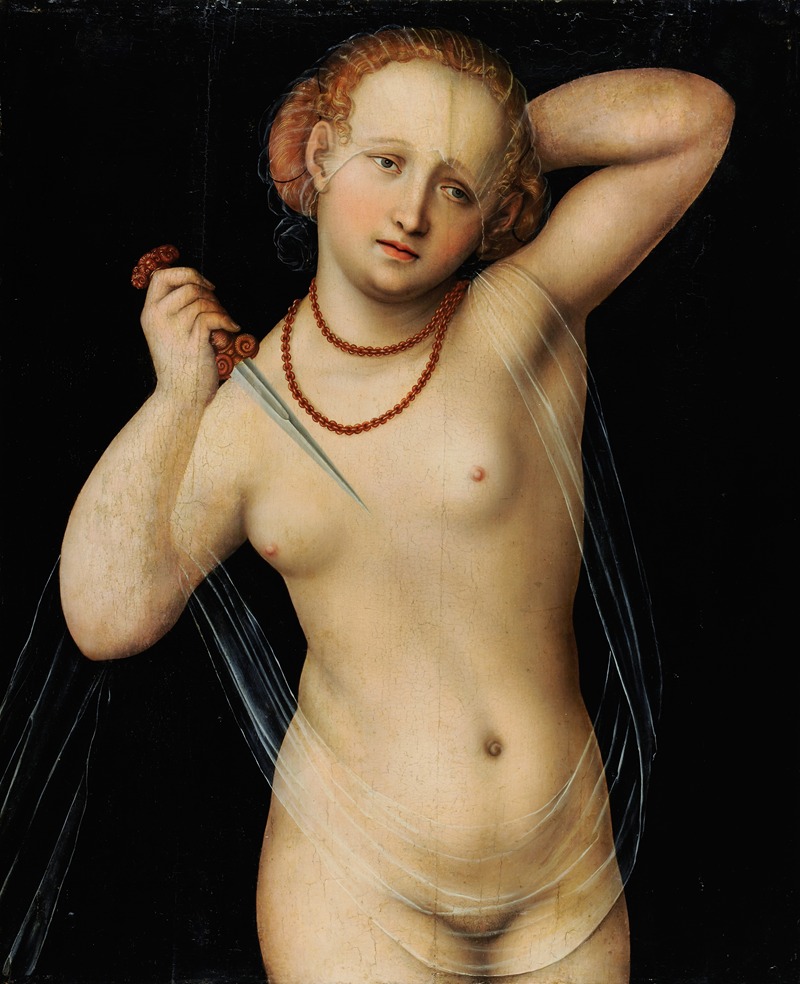
Lucretia
A hand-painted replica of Lucas Cranach the Elder’s masterpiece Lucretia, meticulously crafted by professional artists to capture the true essence of the original. Each piece is created with museum-quality canvas and rare mineral pigments, carefully painted by experienced artists with delicate brushstrokes and rich, layered colors to perfectly recreate the texture of the original artwork. Unlike machine-printed reproductions, this hand-painted version brings the painting to life, infused with the artist’s emotions and skill in every stroke. Whether for personal collection or home decoration, it instantly elevates the artistic atmosphere of any space.
Lucas Cranach the Elder, a prominent German Renaissance painter, created several works depicting the subject of Lucretia, a legendary figure from ancient Roman history. These paintings typically portray Lucretia at the moment of her tragic death, a scene that has been a recurring theme in Western art due to its moral and historical significance.
Lucretia was a noblewoman in Roman history whose story is recounted by ancient authors such as Livy. According to the legend, she was raped by Sextus Tarquinius, the son of the last king of Rome, Tarquinius Superbus. To preserve her honor and protest the injustice, Lucretia took her own life. Her death became a catalyst for the overthrow of the Roman monarchy and the establishment of the Roman Republic.
Cranach's depictions of Lucretia are notable for their combination of Renaissance ideals of beauty and the moral gravity of the subject matter. In these works, Lucretia is often shown holding a dagger, poised to take her own life, while her expression conveys a mix of sorrow and resolve. She is typically depicted in elegant, contemporary clothing, which reflects Cranach's tendency to blend historical themes with the fashion and aesthetics of his time.
One of Cranach's paintings of Lucretia, dated to around 1530, exemplifies his style. The composition focuses on the figure of Lucretia, who is shown in a three-quarter view against a dark background. Her delicate features, flowing hair, and richly adorned garments highlight Cranach's skill in rendering detail and texture. The dagger in her hand and her exposed upper body emphasize the vulnerability and drama of the moment. This combination of sensuality and tragedy is characteristic of Cranach's approach to such themes.
Cranach produced multiple versions of Lucretia, each varying slightly in composition and detail. These works were likely created for private patrons, as the subject of Lucretia was popular among Renaissance collectors for its blend of classical themes and moral undertones. The paintings reflect the humanist interest in antiquity and the Renaissance fascination with the portrayal of strong, virtuous women.
Today, several of Cranach's Lucretia paintings are housed in prominent museums and collections around the world, including the Kunsthistorisches Museum in Vienna and the Metropolitan Museum of Art in New York. These works continue to be studied and admired for their artistic merit and their exploration of a powerful historical narrative.





